
Prompt-Aligned SEO: Writing Content That AI Wants to Summarize
What is Prompt-Aligned SEO? Strategy Basics
 While SEO prompt optimization is similar in concept to keyword research, there are some key differences.
First, it’s crucial to understand that LLMs don’t care about the ‘keywords’ that appear in prompts.
That’s because they’re sophisticated enough to parse the full meaning of a prompt without relying on keyword matching (like search engine algorithms do).
Whenever you search for something on Google, its algorithm checks its index for content that contains exact matches and partial matches for the keyword you used.
It then considers hundreds of ranking factors to provide what it believes to be the highest quality results, but it’s still keyword matching at its core.
This system works because traditional search engines are optimized for retrieving documents (i.e., web pages) instead of having an actual conversation.
LLMs do not operate this way.
Since they’re able to fully understand user prompts, the importance of keyword matching is largely diminished.
Also, AI-powered search tools don’t have search indexes because they don’t crawl the web. To find information online, they use APIs, scraping tools, and plugins to access content that’s already been indexed by major search engines like Google and Bing.
What does this mean for prompt-aligned SEO?
It means that you don’t always need to include the direct wording of user prompts in your content.
While gathering user prompts is still necessary (so that you know what your audience is looking for), you don’t need to emphasize exact or partial match keywords as much as you do in traditional SEO.
Instead, semantic relevance, clarity, and helpfulness are what matter most to LLMs.
Structured data is also massively important because it makes your content much easier for LLMs to scan and understand. For this reason, using proper schema markup is doubly important for SEO prompt optimization.
While SEO prompt optimization is similar in concept to keyword research, there are some key differences.
First, it’s crucial to understand that LLMs don’t care about the ‘keywords’ that appear in prompts.
That’s because they’re sophisticated enough to parse the full meaning of a prompt without relying on keyword matching (like search engine algorithms do).
Whenever you search for something on Google, its algorithm checks its index for content that contains exact matches and partial matches for the keyword you used.
It then considers hundreds of ranking factors to provide what it believes to be the highest quality results, but it’s still keyword matching at its core.
This system works because traditional search engines are optimized for retrieving documents (i.e., web pages) instead of having an actual conversation.
LLMs do not operate this way.
Since they’re able to fully understand user prompts, the importance of keyword matching is largely diminished.
Also, AI-powered search tools don’t have search indexes because they don’t crawl the web. To find information online, they use APIs, scraping tools, and plugins to access content that’s already been indexed by major search engines like Google and Bing.
What does this mean for prompt-aligned SEO?
It means that you don’t always need to include the direct wording of user prompts in your content.
While gathering user prompts is still necessary (so that you know what your audience is looking for), you don’t need to emphasize exact or partial match keywords as much as you do in traditional SEO.
Instead, semantic relevance, clarity, and helpfulness are what matter most to LLMs.
Structured data is also massively important because it makes your content much easier for LLMs to scan and understand. For this reason, using proper schema markup is doubly important for SEO prompt optimization.
The importance of relevance, clarity, and helpfulness
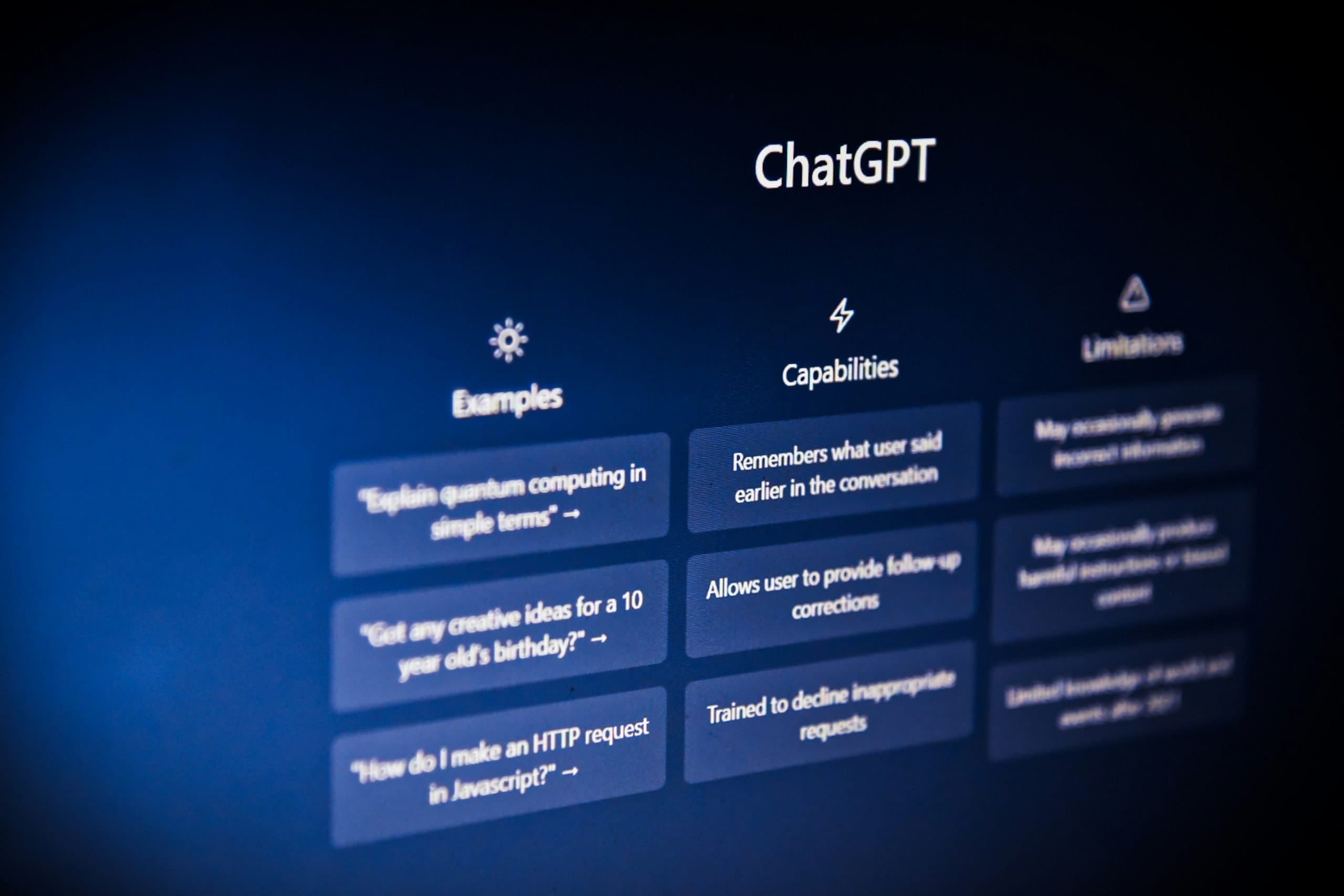 Going with what we’ve established about how LLMs match content with user prompts, let’s consider an example.
Let’s say a user pulls up ChatGPT and searches for something like, “How can I improve the dwell time on my blog?”
ChatGPT would then:
Going with what we’ve established about how LLMs match content with user prompts, let’s consider an example.
Let’s say a user pulls up ChatGPT and searches for something like, “How can I improve the dwell time on my blog?”
ChatGPT would then:
- Understand the full meaning of the prompt, not just individual words
- Match the prompt with conceptually relevant, helpful content (even if it doesn’t use the same terms)
- Helpful content
- Semantic HTML and schema markup
- Clearly defined answers, terms, and concepts
Reverse Engineering and Testing Prompts
First, you need to uncover relevant, popular prompts that relate to your brand. Instead of keyword research, you can think of this process as prompt research. However, this process is trickier than SEO keyword research because prompt data isn’t readily available. Companies like OpenAI don’t disclose:- What users ask tools like ChatGPT
- The LLMs responses
- Google autocomplete
- The People Also Ask section
- Perplexity’s public feed
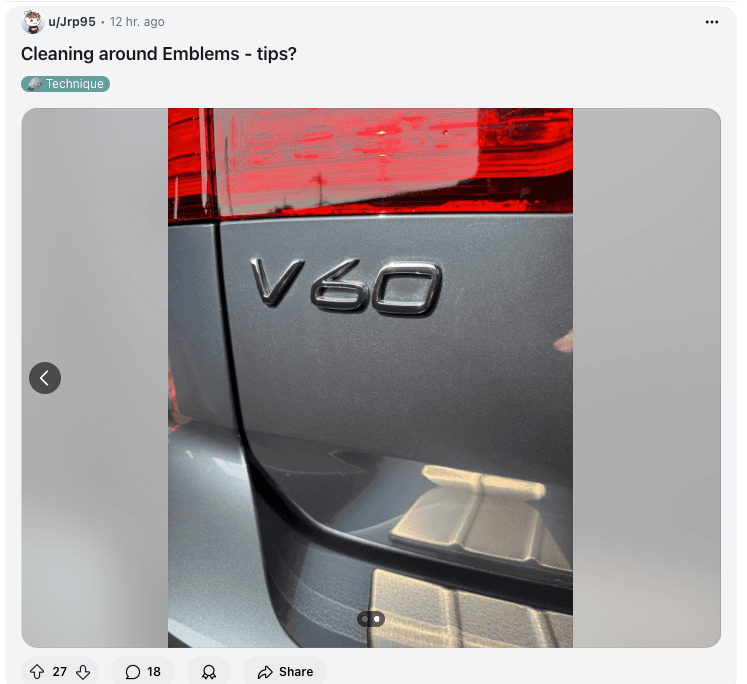 You could also check the People Also Ask Section on Google:
You could also check the People Also Ask Section on Google:
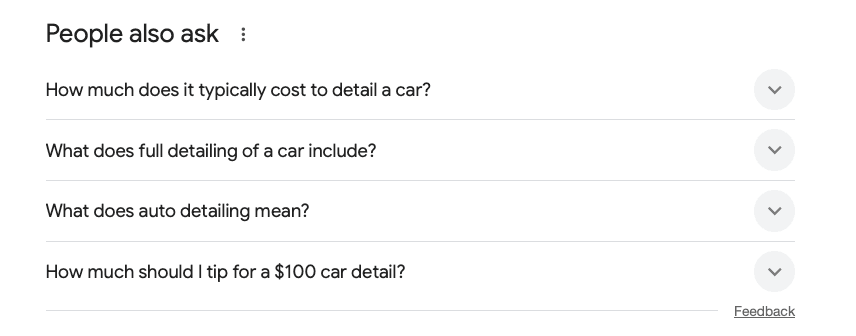 Then, there’s Google autocomplete:
Then, there’s Google autocomplete:
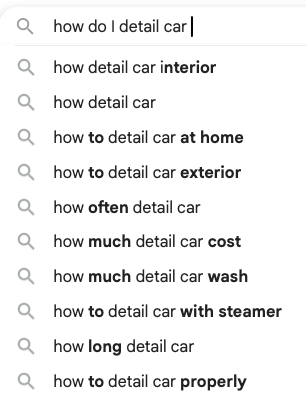 As you can see, there are plenty of prompts to work with here.
Once you’ve published optimized content for the prompts of your choosing, how can you track your results?
An easy way to find out is to just use the prompts on AI search tools yourself. Pay attention to who each tool cites in their responses. If your brand starts to appear as a recommendation or source, then you know you’re on the right track!
This will also help you gauge the level of competition for each prompt you target.
Similar to the keyword difficulty score for SEO keywords, the presence of major websites as sources for certain prompts (think Wikipedia, Mayo Clinic, and government websites) is a sign you’re in a high authority space (and thus, it will be harder to get cited).
As you can see, there are plenty of prompts to work with here.
Once you’ve published optimized content for the prompts of your choosing, how can you track your results?
An easy way to find out is to just use the prompts on AI search tools yourself. Pay attention to who each tool cites in their responses. If your brand starts to appear as a recommendation or source, then you know you’re on the right track!
This will also help you gauge the level of competition for each prompt you target.
Similar to the keyword difficulty score for SEO keywords, the presence of major websites as sources for certain prompts (think Wikipedia, Mayo Clinic, and government websites) is a sign you’re in a high authority space (and thus, it will be harder to get cited).
Aligning Headers and Questions
Once you have a list of prompts to target, it’s time to add them to your content’s headers and FAQ sections. Include your questions as H2s, and include proper schema markup for FAQs, blogs, author biographies, reviews, and product listings. What’s that? Schema markup is a widely used form of structured data that all major AI search tools recognize. The inclusion of schemas clearly labels things like FAQ sections and product reviews, so they’re a necessity. For question-based content, don’t beat around the bush after posing a question in an H2 (heading). Instead, immediately answer the question as concisely as possible. That makes it easier for AI tools to identify questions and their corresponding answers, which increases your chances of getting cited in AI summaries. Semantic HTML is another must for improving your AI search visibility. Check out our guide on whether LLMs can actually ‘read’ your site to learn more about its proper usage.Creating Concise, Scannable Content
The next step is to publish truly helpful content that’s easy for AI search tools to parse.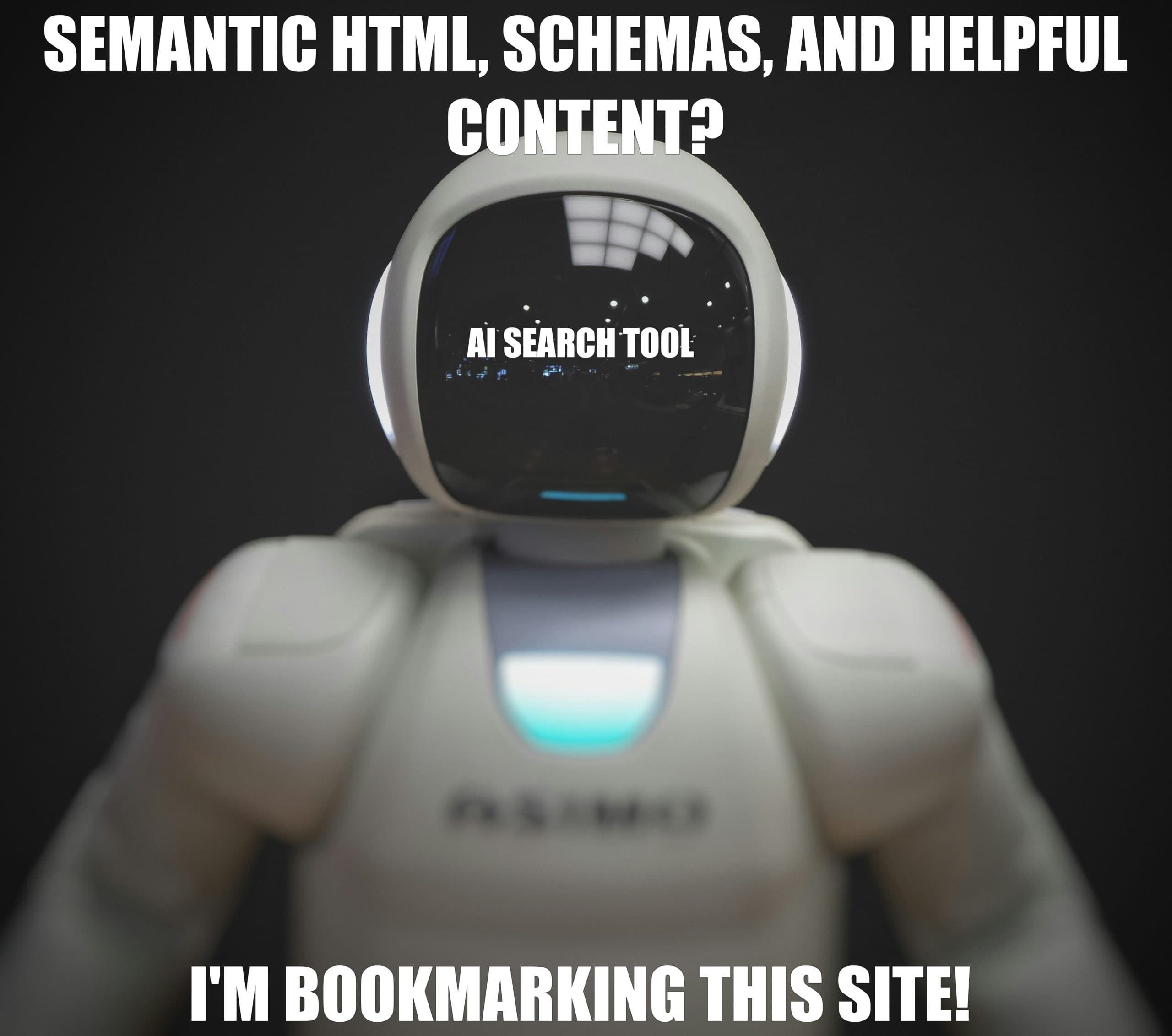 That means adopting a readable format featuring short sentences and paragraphs.
Each subtopic should receive a subheading so that the entire piece is structured and easy to follow.
Not only does this make it easier for AI tools to parse your content, but it also improves your website’s user experience.
Another key aspect of optimizing for AI is authorship.
In particular, ensure your articles are clearly attributed to the most authoritative member (or members) of your staff.
Include a picture and a short biography mentioning all their accolades, credentials, and experience. Also, add links to their social media profiles and official websites.
These steps are essential for establishing your authority on AI search tools.
Here are some more tips for creating prompt-friendly content:
That means adopting a readable format featuring short sentences and paragraphs.
Each subtopic should receive a subheading so that the entire piece is structured and easy to follow.
Not only does this make it easier for AI tools to parse your content, but it also improves your website’s user experience.
Another key aspect of optimizing for AI is authorship.
In particular, ensure your articles are clearly attributed to the most authoritative member (or members) of your staff.
Include a picture and a short biography mentioning all their accolades, credentials, and experience. Also, add links to their social media profiles and official websites.
These steps are essential for establishing your authority on AI search tools.
Here are some more tips for creating prompt-friendly content:
- Include FAQs and FAQ sections
- Provide accurate definitions and comparisons
- Make heavy use of bulleted lists, call-out boxes, and TL;DR blocks
Final Takeaways: SEO Prompt Optimization
If you want to improve your visibility on AI search tools, then you need to target the right prompts and create AI-friendly content. Doing so will communicate to AI tools that your brand is reputable, high-quality, and worthy of using for citations and recommendations. Do you want brand-specific advice for your prompt-aligned SEO strategy? Don’t wait to book a free strategy session with us to come up with the perfect plan for your business!The author
Rachel Hernandez
description
Previous
From Obscure to Known: How to Build an Entity Profile AI Can Find
Next
Track Your Brand in AI Search: Tools to See When (and if) You Appear
Discussion
Comments
Louise Savoie
August 18th, 2025
Great read! I like how prompt-aligned SEO focuses on making content easier for AI tools to summarize while still being valuable to readers. I think this approach will become even more important as AI continues to shape how people discover and consume information. Thanks for breaking it down in a simple way!
